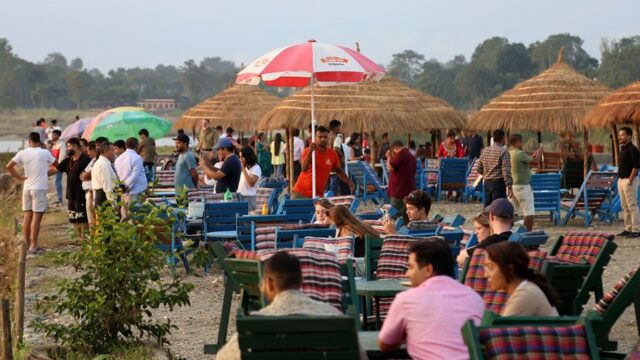The renowned religious and tourist site, Adi Baraha Lake, located in full village of Jaljala Municipality-2, has been buried under debris once again this year due to a landslide.
The landslide, triggered by a heavy downpour on Wednesday morning, came from the Kuwa Pani hill in Jaljala-5, depositing mud and debris into the lake. This follows a similar event last year, when a landslide also turned the lake into a barren area. Although the lake underwent minor repairs during the fiscal year 2080/81 through the Gandaki Province Lake Conservation and Development Authority, it has unfortunately returned to its previous state, according to local resident Navin Jisi.
The landslide has not only filled the lake but has also put one house at risk and buried hundreds of ropanis of rice fields, as reported by Bharat Chhetri, the ward chair of Jaljala Ward No. 4. He mentioned that the area has seen increasing landslide risks since last year. Situated at an altitude of 1,950 meters above sea level, Adi Baraha Lake spans more than three ropanis and is historically noted for its unique ‘C’ shape.
The lake, about three meters deep, was historically surrounded by the Dhaulagiri, Nilgiri, and Annapurna mountain ranges. The lake also houses the Barah Temple, which is now at risk. Local resident Thal Bahadur Ghertri explained that the lake and its temple are of natural origin, with the temple’s history dating back to the 12th century. He noted that while the Ghertis and Chhetris have worshipped the Barah deity as their family god, people from various communities also have faith in and worship this deity.
Since the onset of continuous landslides from Kuwa Pani on Shrawan 6, the lake has been filled with mud and debris. Local resident Nabin GC noted that what was once a beautiful lake has now become a desolate barren land. The lake is typically the site of a grand festival during Janai Purnima, attracting thousands of devotees and visitors.
The Baraha Temple, located near the lake, was inaugurated two years ago by former President Bidya Devi Bhandari. The lake is accessible by a two-hour uphill trek from the district headquarters of Myagdi or by motor vehicle, and it offers views of various settlements in the districts of Parbat, Myagdi, and Baglung.
Local beliefs hold that visiting and offering prayers at the lake can fulfill personal wishes. The lake, which is a significant part of the Annapurna-Dhaulagiri Community Trail, is known for its perpetually full condition, and the presence of a banyan tree adds to its charm.
Last year’s landslide had displaced seven homes and converted 85 ropanis of arable land into barren land. Following the event, a team from the National Disaster Risk Reduction and Management Authority, including geologists and technical experts, suggested relocating the affected settlements.






